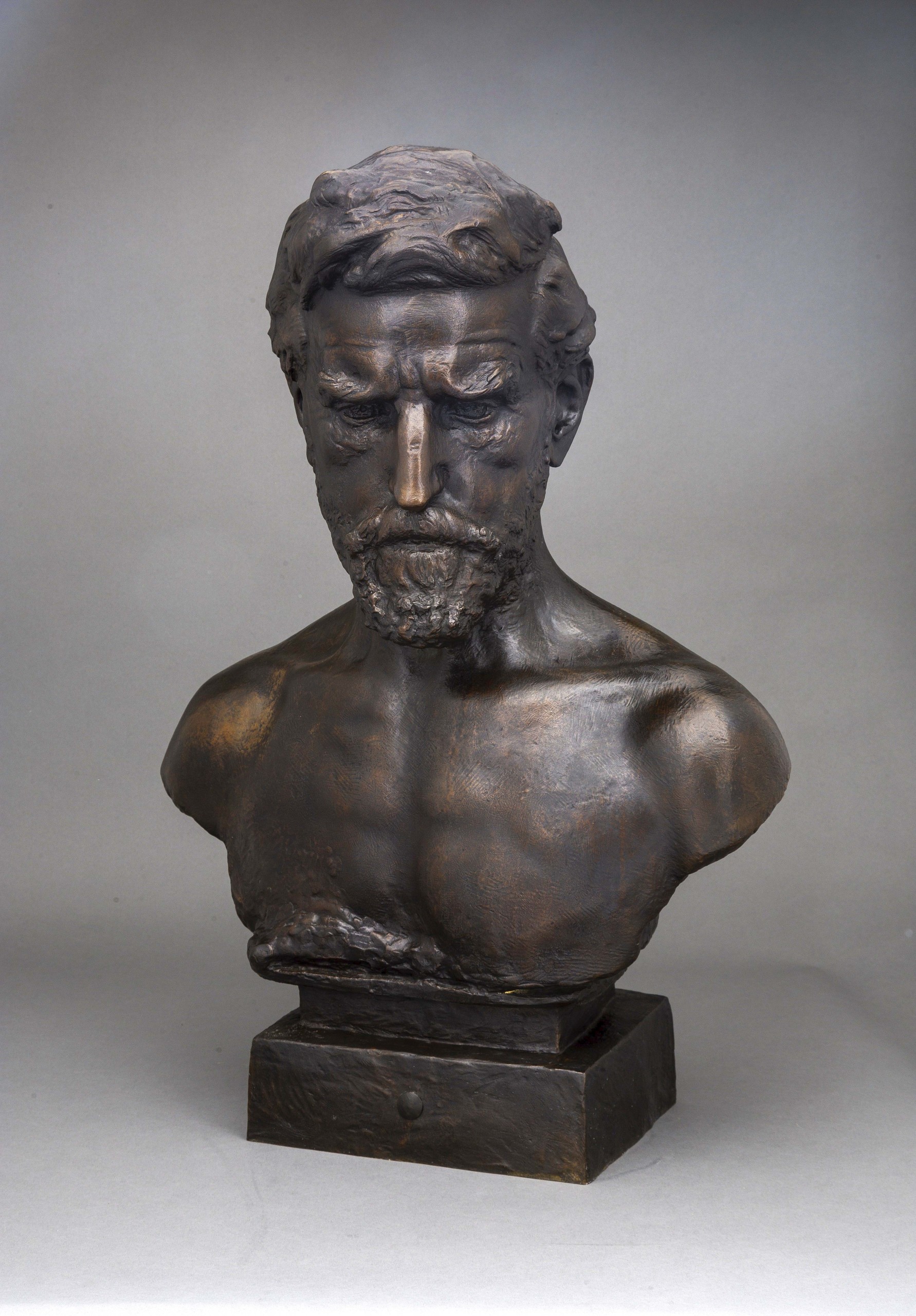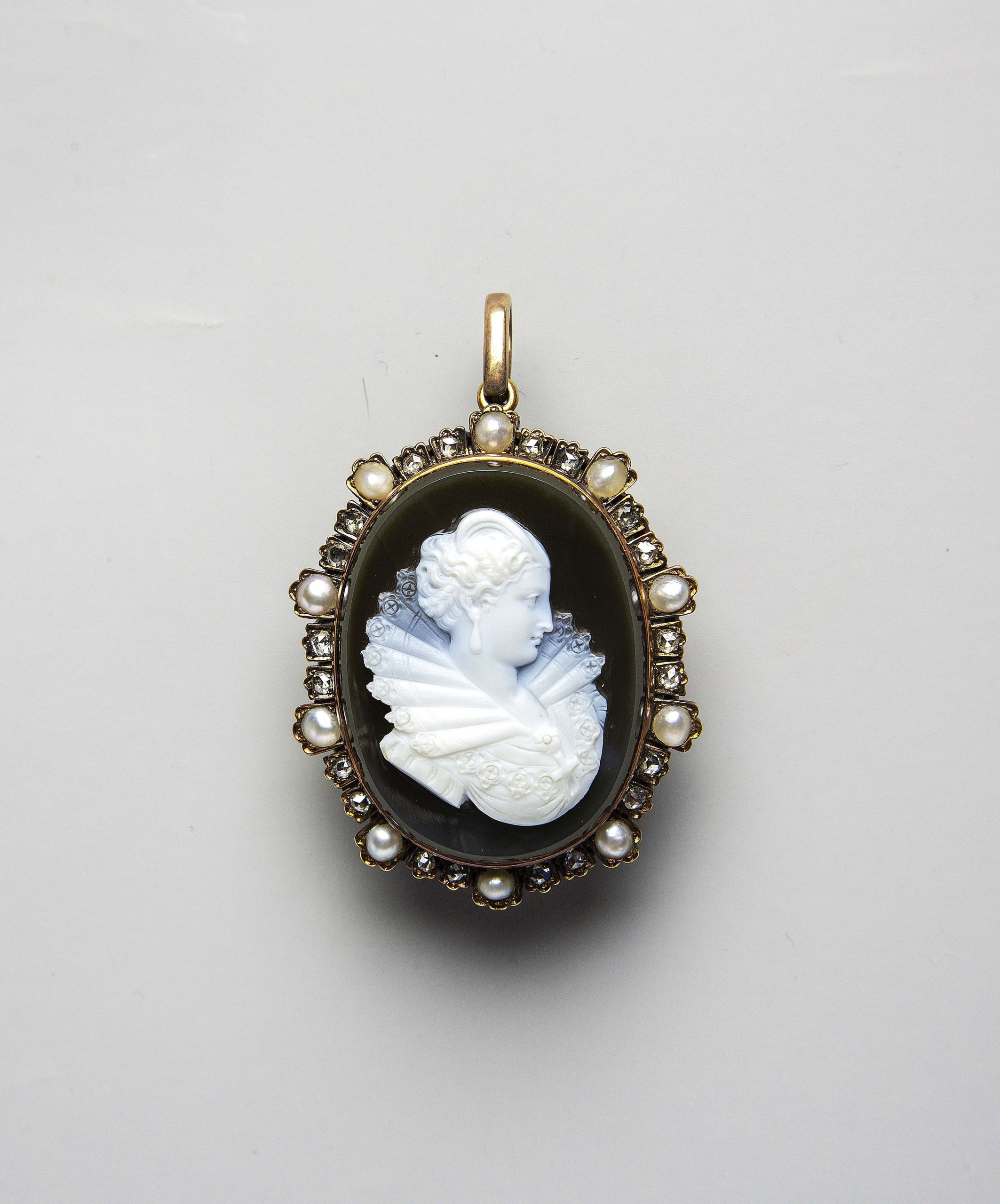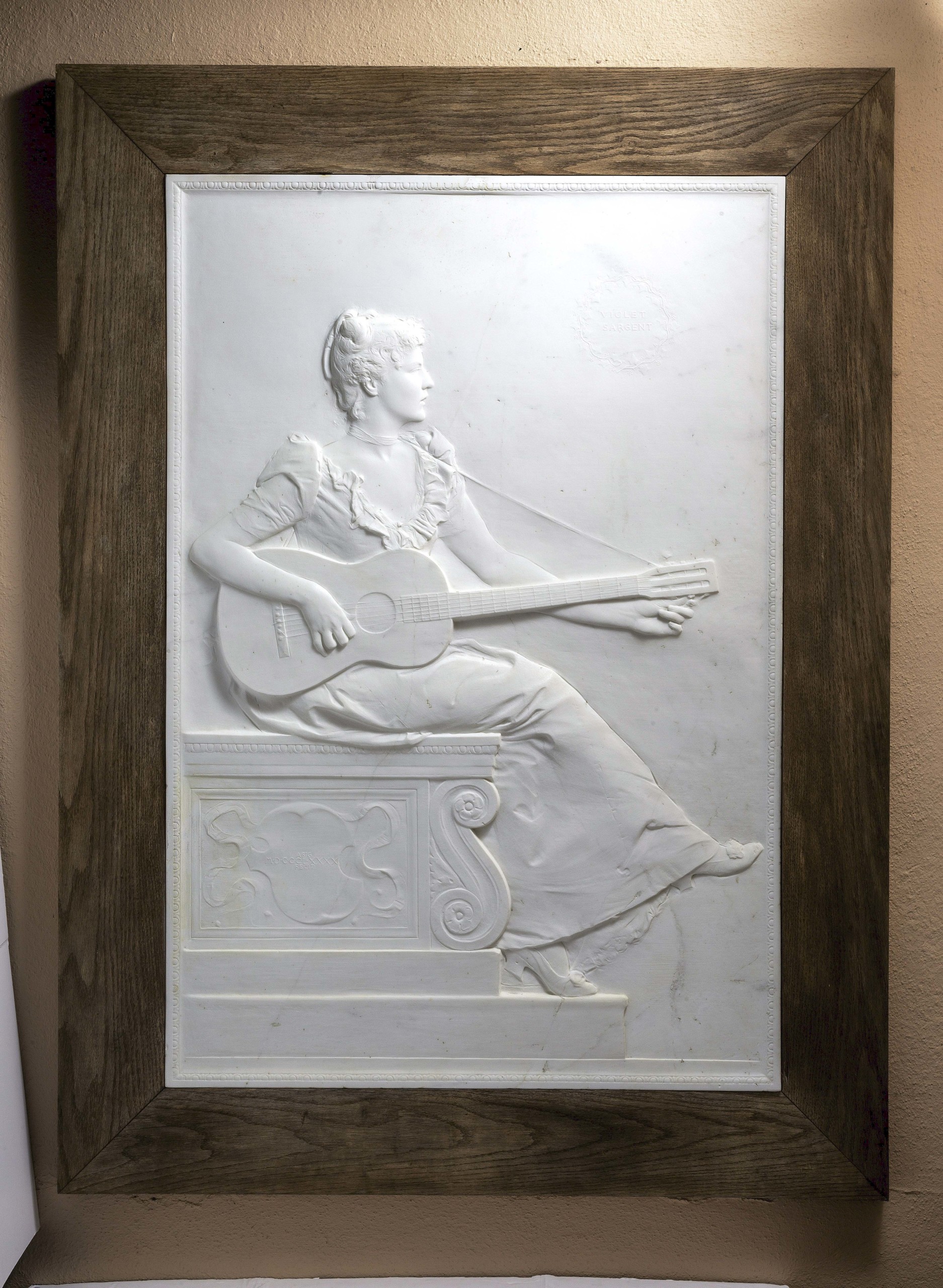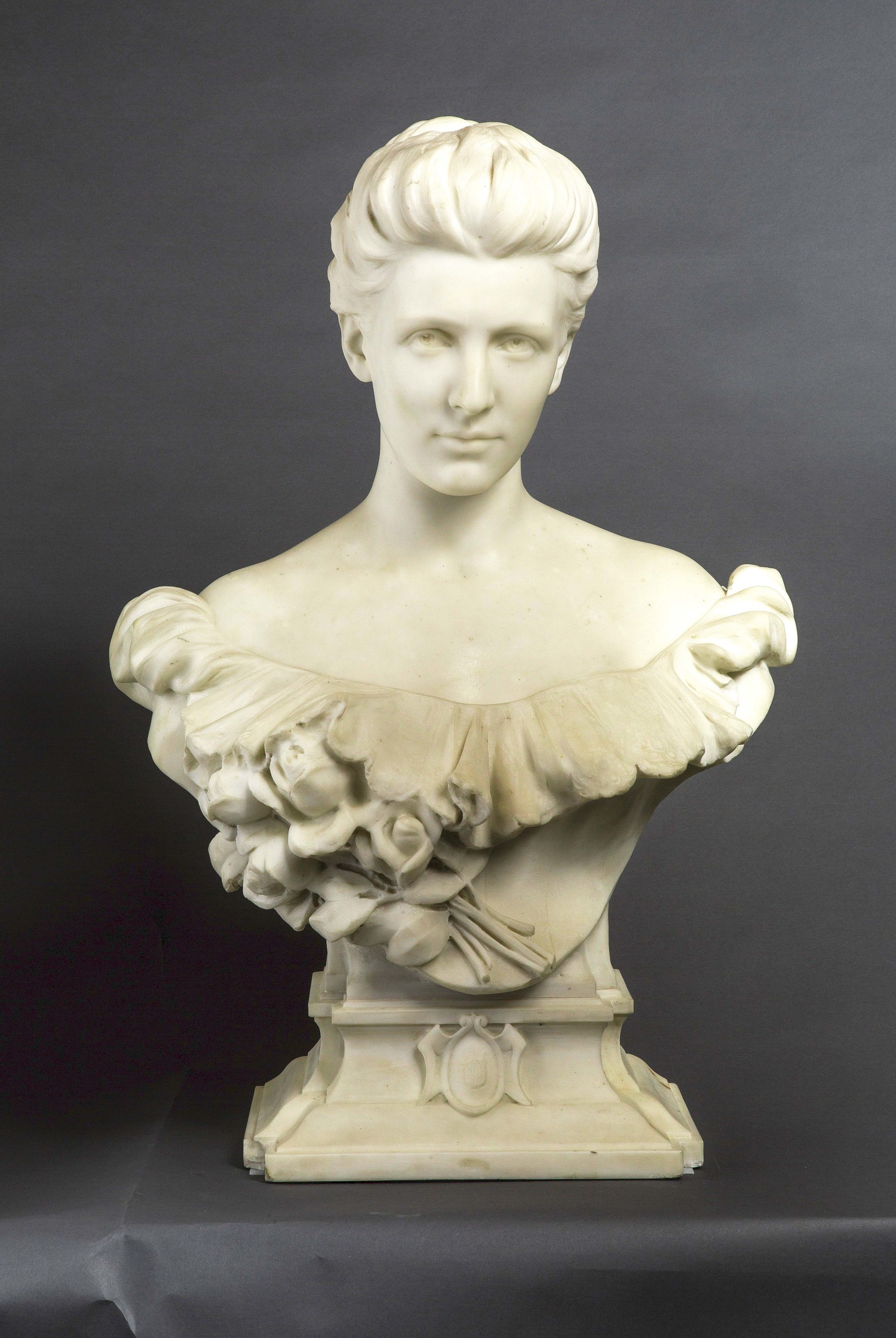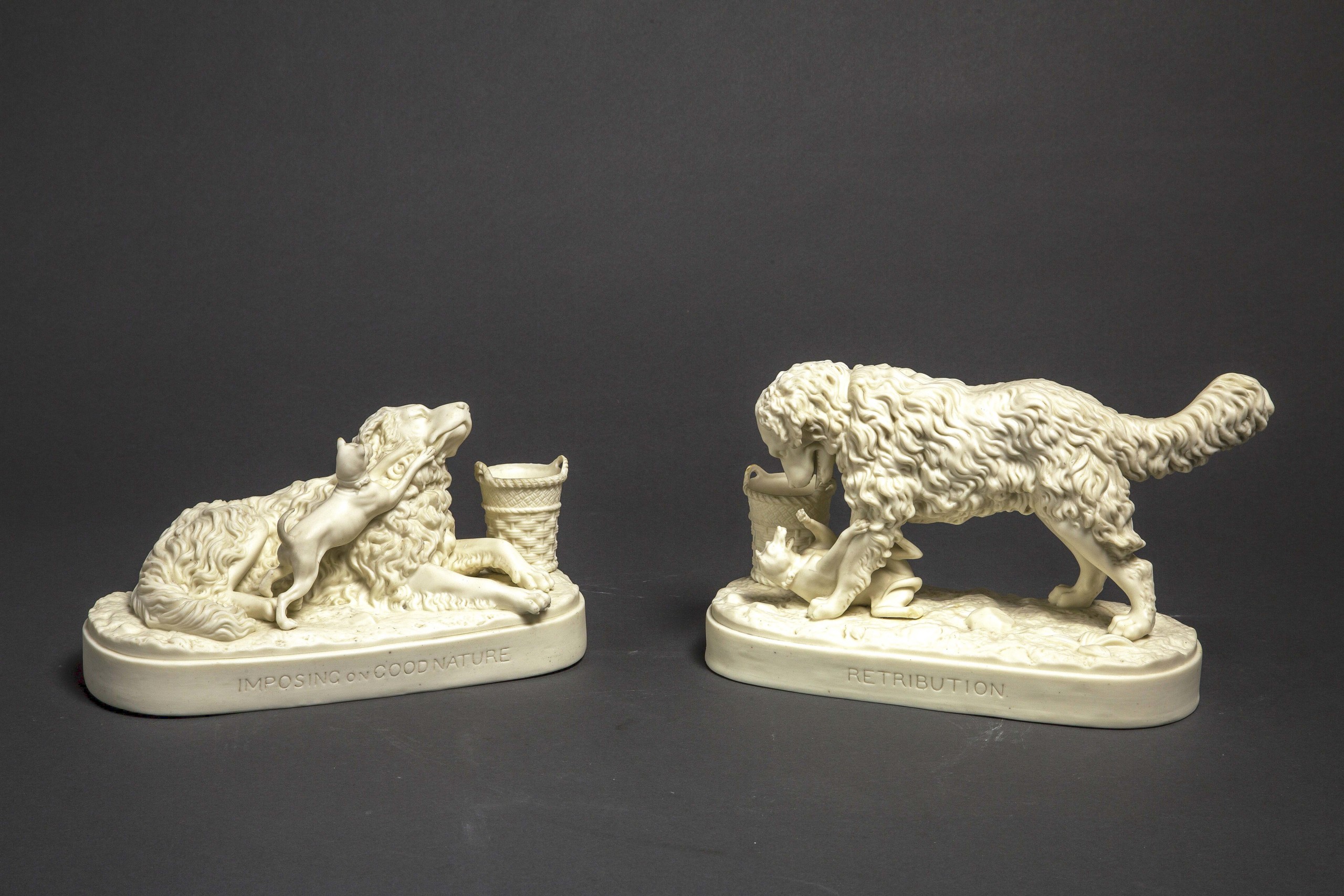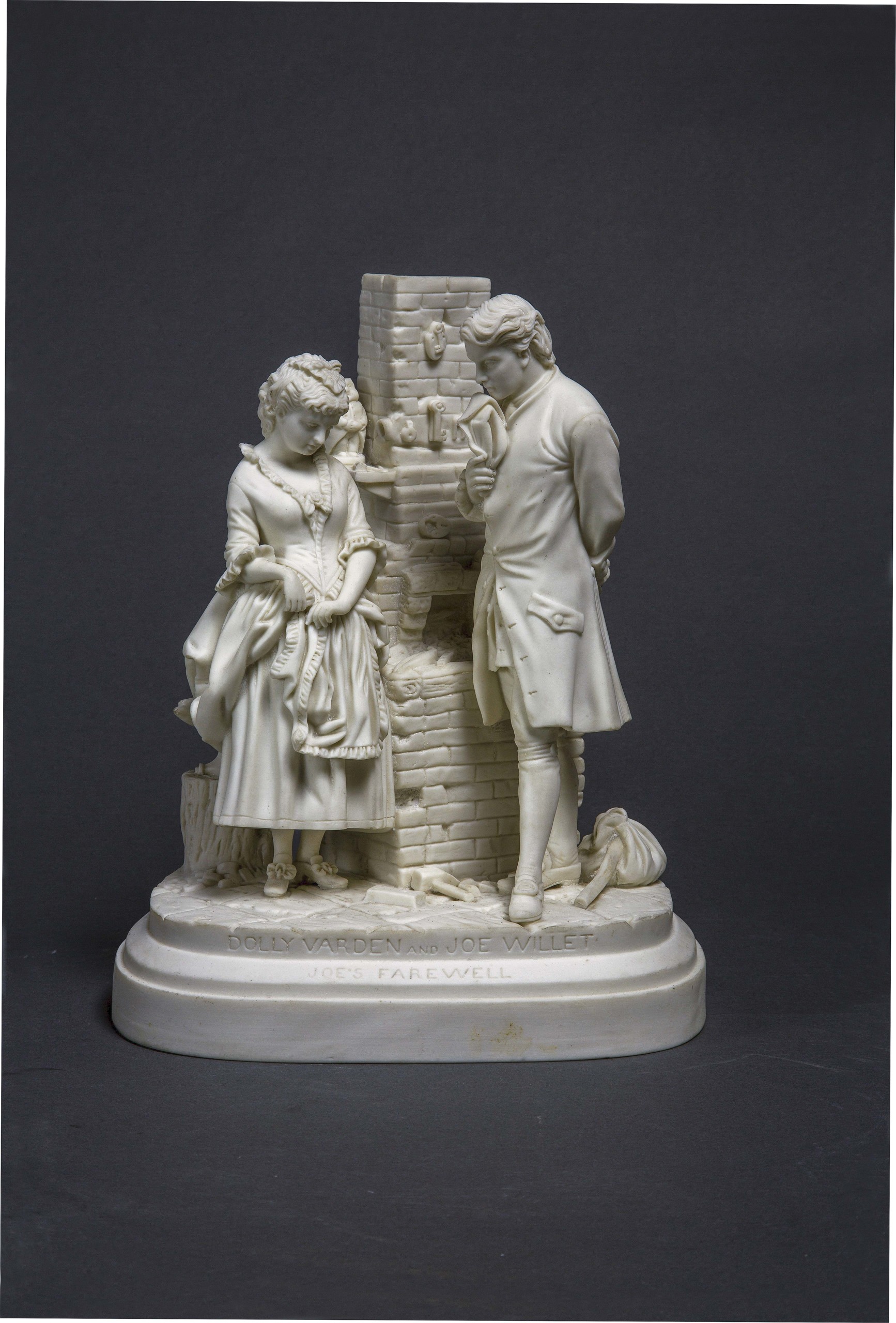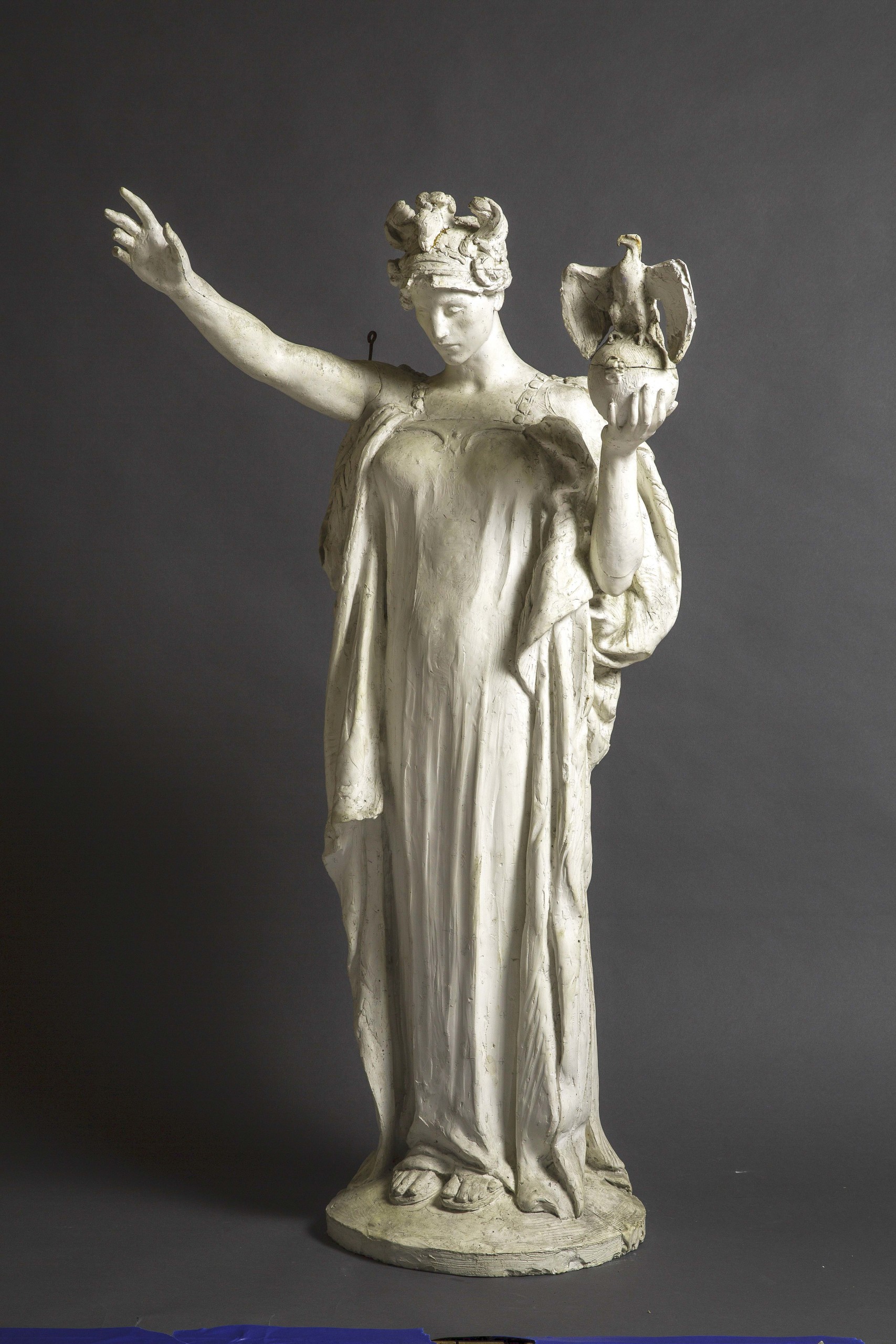
Model for “Wisconsin” by Daniel Chester French (American, 1850-1931), 1913-14, plaster, 35½ by 11-5/8 inches. Chesterwood, Stockbridge, Mass. Courtesy American Federation of Arts.
By Kristin Nord
NASHVILLE, TENN. — Augustus Saint-Gaudens and Daniel Chester French returned home from sojourns in Europe poised to become the preeminent sculptors of the Gilded Age.
Both sculptors would shape the nation’s visual and intellectual landscape and create dozens of the nation’s most recognizable public artworks — from Saint-Gaudens’s “Diana” atop New York City’s Madison Square Garden to French’s seated “Abraham Lincoln” in the Lincoln Memorial in Washington DC.
“With an aesthetic of formal elegance, they contributed to the creation of a national identity rooted in conceptions of liberty, grandeur and common cause,” Andrew Eschelbacher PhD, scholar of Nineteenth and Twentieth Century American and European sculpture, writes in the preface to Monuments & Myths: The America of Sculptors Augustus Saint-Gaudens and Daniel Chester French, The American Federation of Arts published the catalogue for the exhibition of the same name. “Their aesthetics ‘sang’ with its mix of classically inspired gravitas and modern naturalism,” he continued, “as they sculpted for both private and public spheres, they created ensembles that deftly balanced memorialization with optimism, the real with the ideal, suggesting that America could bridge personal and shared loss with the boundless new age.”
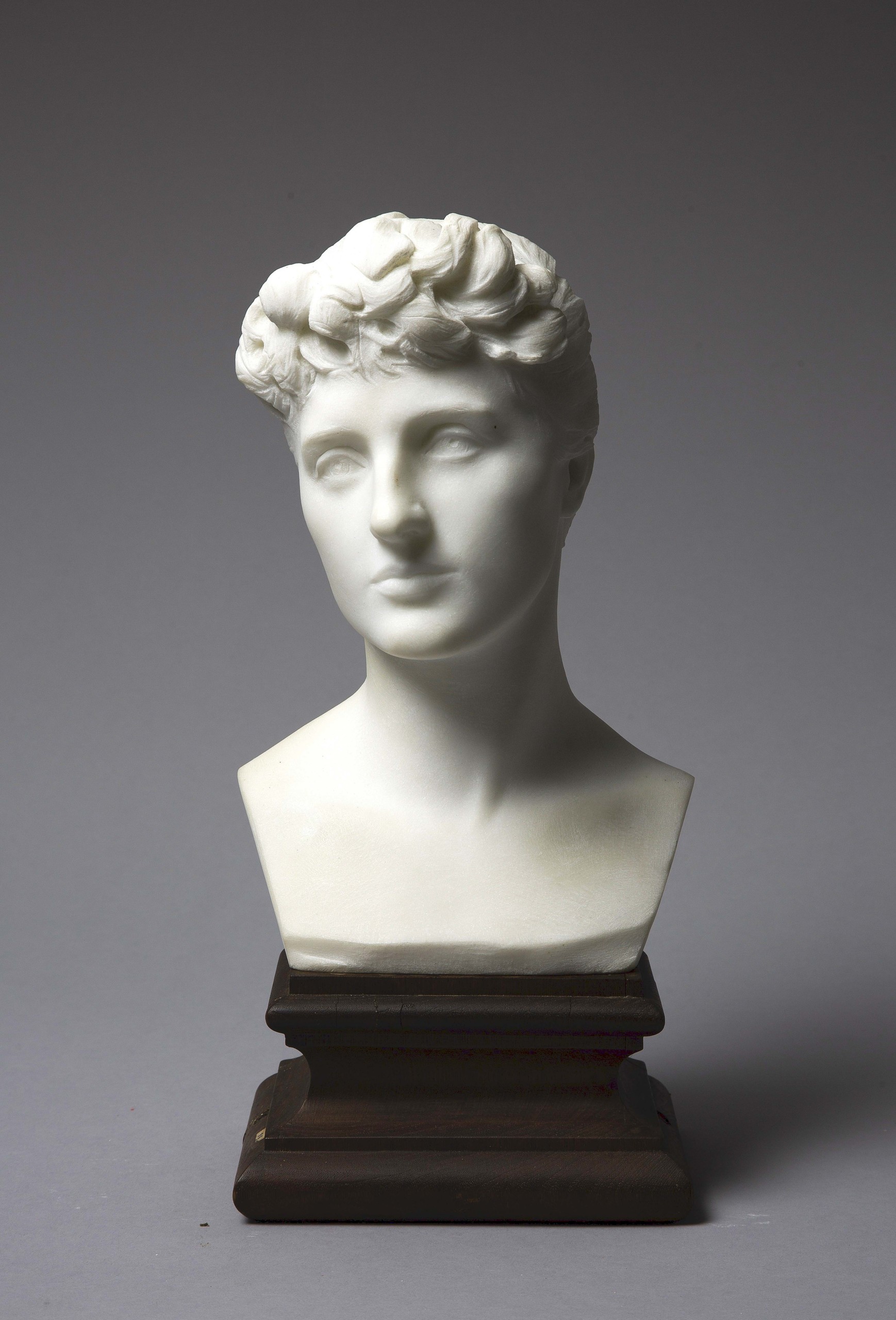
“Davida Johnson Clark” by Augustus Saint-Gaudens (American, 1848-1907), 1886, marble, 11 by 7-7/8 by 7½ inches. Saint-Gaudens National Historical Park, Cornish, N.H. Courtesy American Federation of Arts.
The traveling exhibition is a collaborative project between the American Federation of Arts (AFA) and the Wyeth Foundation, the artists’ historic museums Chesterwood, a site of the National Trust for Historic Preservation, and Aspet, which is overseen by the Saint-Gaudens Memorial/the Saint-Gaudens National Historic Park. It includes some 70 sculptures, models, bas reliefs, cameos, busts, and maquettes, and will be on view at the Frist Art Museum from March 1 through May 27 before continuing to the Brunner Art Museum at Iowa State University and the Michener Art Museum in Doylestown, Penn.
Saint-Gaudens and French were well-suited to meet the demand for monumental sculpture with aesthetics that fused modern naturalism and classically inspired solemnity. Both artists were already highly sought-after portraitists working in bust formats as well as low-relief panels.
Saint-Gaudens (1848-1907) was born in Dublin, Ireland, the son of an Irish mother and a French father and had immigrated to New York as an infant. Daniel Chester French (1850-1931), was born in Exeter, N.H., the fourth child from a New England family with long roots in the United States.
Their studios in New England — in Cornish, N.H., for Saint-Gaudens, and Stockbridge, Mass., for French — became creative laboratories, places where apprentice sculptors, carvers, casters and models each played crucial roles in the development and success of their commissions for far-flung cities that included Boston, Chicago, New York and Washington DC.
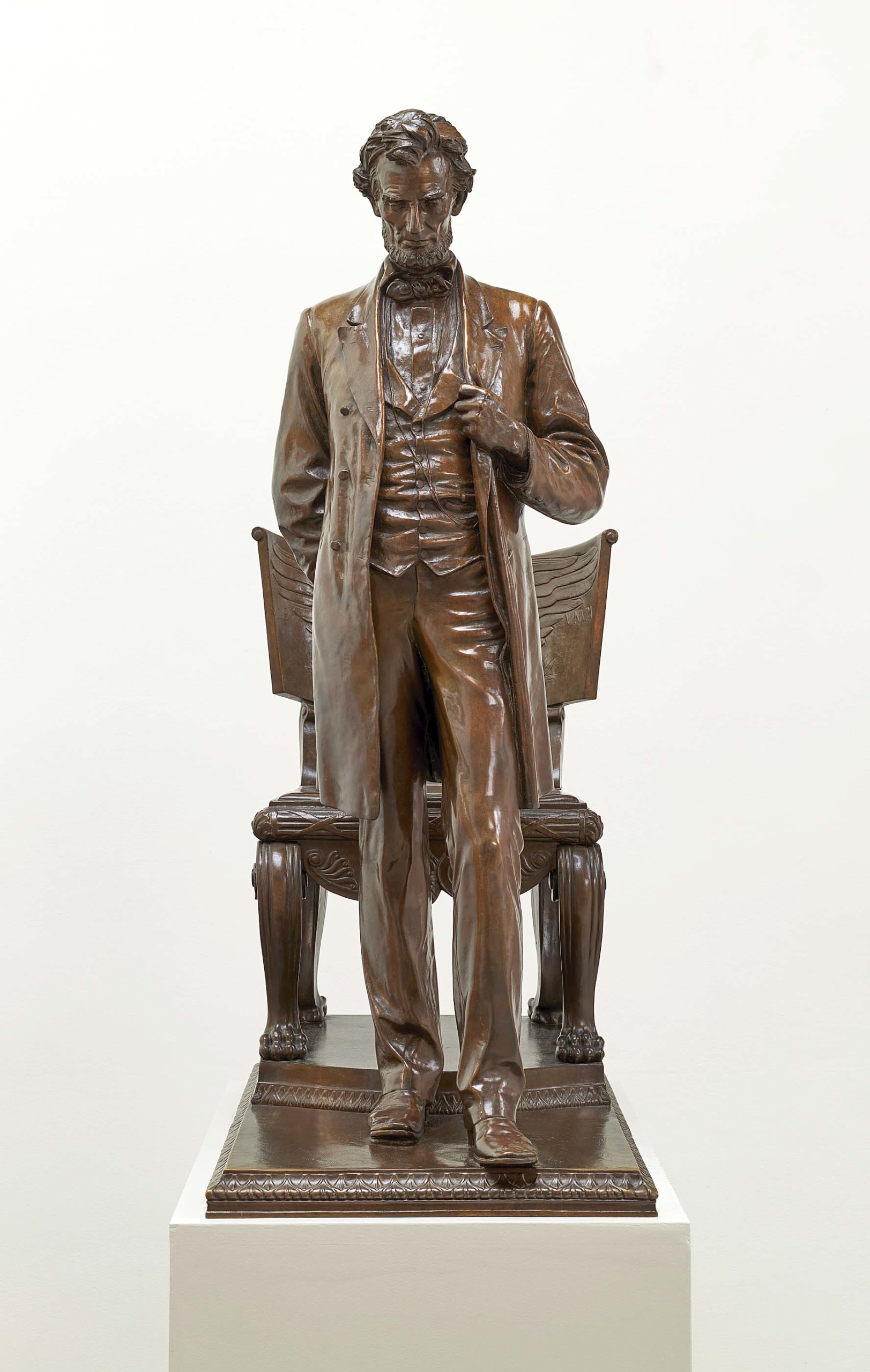
“Abraham Lincoln: The Man” by Augustus Saint-Gaudens (American, 1848-1907), 1887, cast 1912, bronze, 45¾ by 16-1/8 by 28-3/8 inches. Saint-Gaudens National Historical Park, Cornish, N.H, SAGA 879. Courtesy American Federation of Arts.
Art historian Kelvin L. Parnell notes that after the incomparable losses of the Civil War — when some 600,000 citizens had died — America’s traditional mourning practices had changed. Sculpture became a crucial means by which a nation could address its grief and find solace in commemorative spaces. Saint-Gaudens and French were at the forefront of this development with commissioned works that were beautiful and emotive.
The men were amiable rivals, with different temperaments but they shared an intense work ethic. French was highly proficient in modeling the nude female form; from his earliest reclining female figure, “Memory,” to his final sculpture, “Andromeda,” he often relied upon for his allegorical references.
“Monuments and Myths” unfolds by theme, beginning with a look at the artists’ studios and practices, and the ways in which the monuments and architectural sculptures of the late Nineteenth Century sought to proclaim the country’s grandeur. We learn about the relationship in the late Nineteenth and early Twentieth Centuries between the artists and their patrons and how clients shaped many commissions. And, we consider the ways in which Saint-Gaudens’ and French’s funerary monuments were embraced by a stoical nation. From French’s “Death and Youth,” to Saint-Gaudens’ “Adams Memorial,” their depictions of death feel both devastating and palpable.
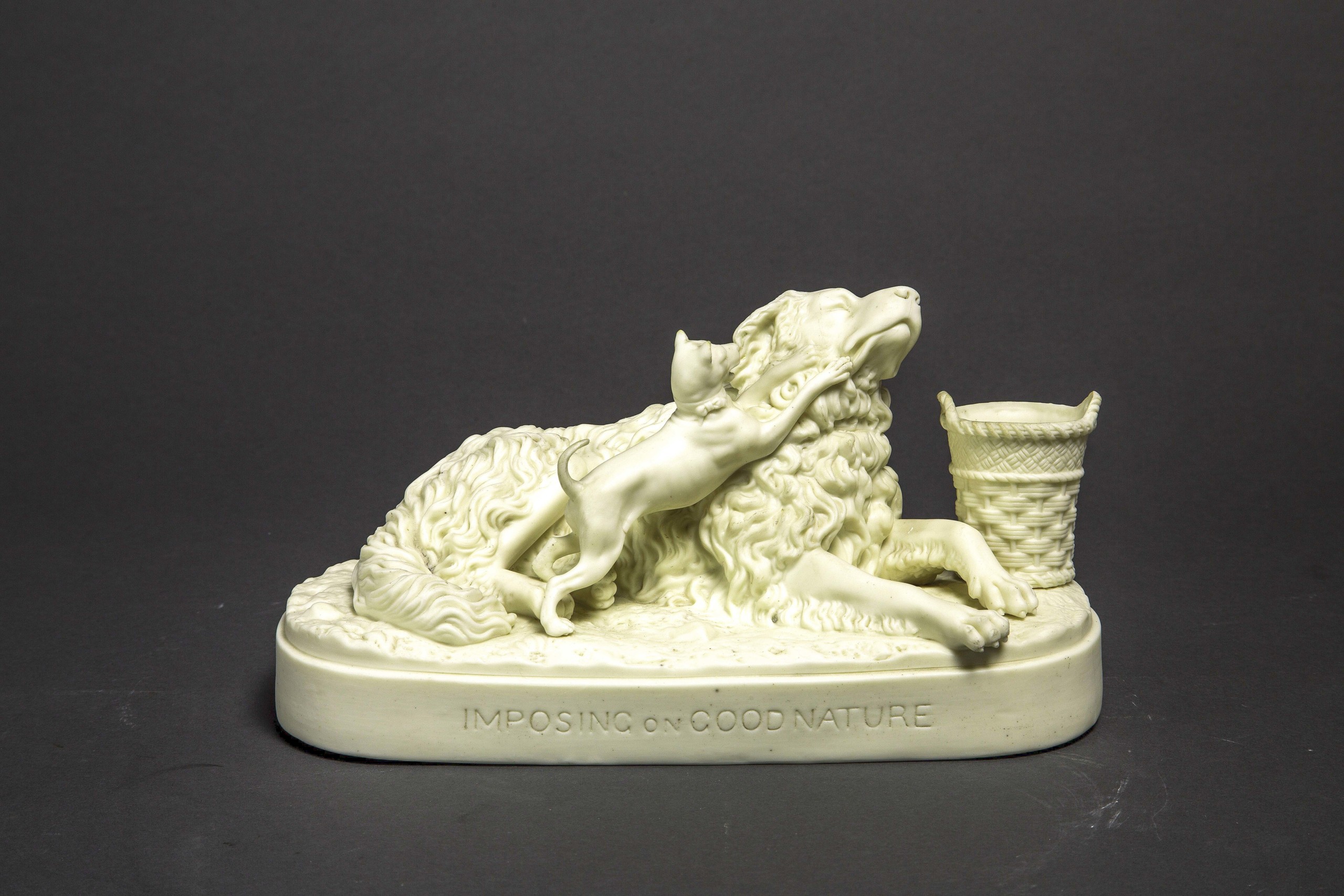
“Imposing on Good Nature” by Daniel Chester French (American, 1850-1931), 1871-72, Parian ware, 5 by 10 by 4¾ inches. Chesterwood, Stockbridge, Mass. Gift of the Daniel Chester French Foundation. Courtesy American Federation of Arts.
Katie Delmez, senior curator at the Frist, has worked with interpretation director Meagan Rust to develop educational programming that adds a local component to this chapter in American art history.
“We have created a digital interactive of local monuments that are relevant to our city, and we hope it will make people not only ask what has been commemorated, but also what groups of people have been omitted or miscategorized,” she said. A trolley tour of monuments specific to the Nashville area has also been scheduled. And, in what promises to be a fascinating lecture, Dana Pilson, the curatorial researcher and collections coordinator at Chesterwood, will take people behind the scenes on February 29 to explore the work in French’s studio, from the cast of characters he worked with collaboratively to his use of flat-gauge railcar, installed with an underground rail to enable him to evaluate and modify his works — as needed outside the studio and in natural light.
“I am not a specialist — my background is in contemporary African American art — but I’ve really enjoyed thinking about and working on a project that is out of my usual area of study; there is always going to be a need and time to reflect on loss,” Delmez said simply. “We don’t do death well in this country, and yet paradoxically we have an inherent need to honor the people we have lost and to place historic tragedies within the context of our nation’s story.”
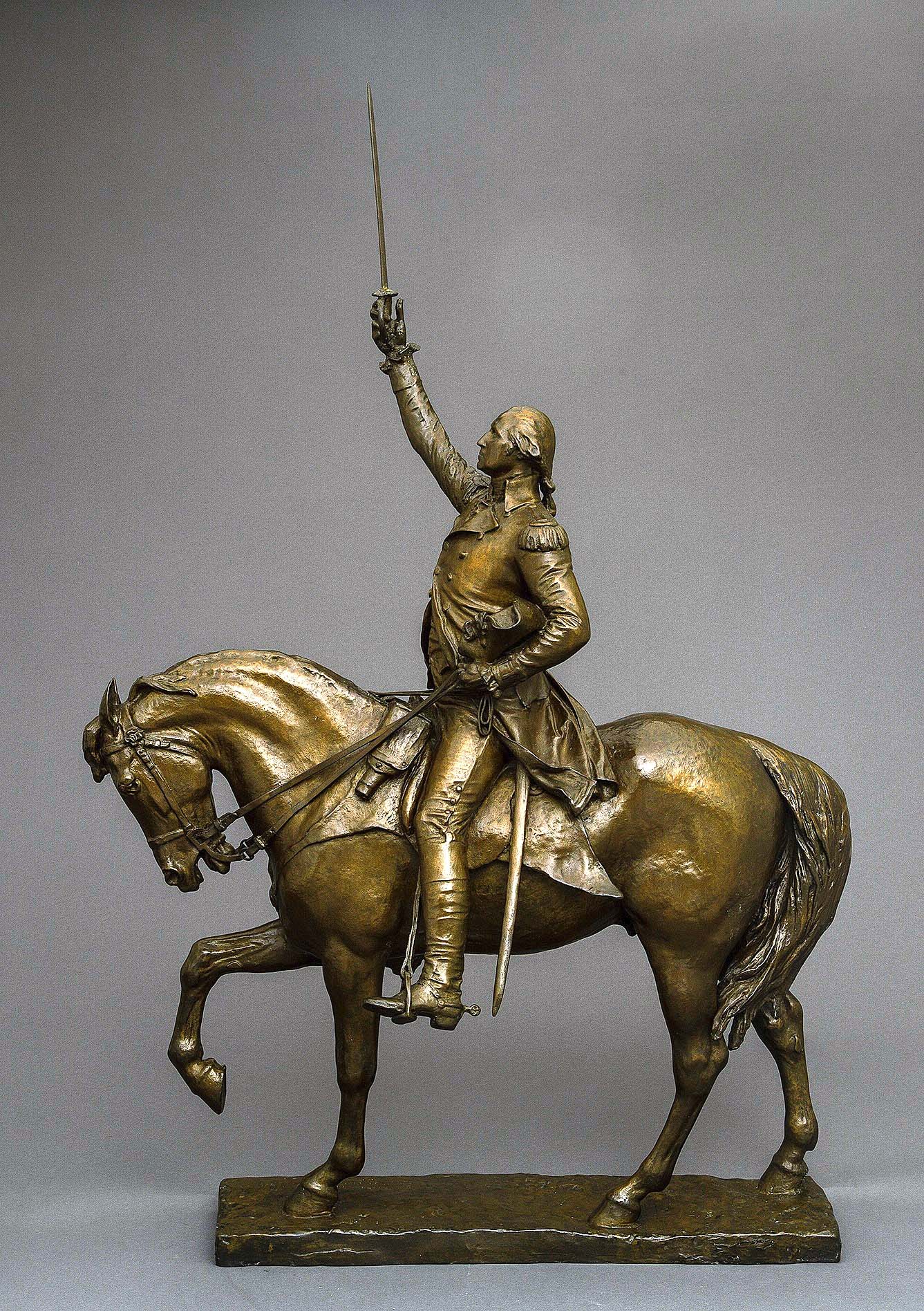
“George Washington Equestrian” by Daniel Chester French (American, 1850-1931), 1903-04, bronze; 30¾ inches. Chesterwood, Stockbridge, Mass. Gift of the Daniel Chester French Foundation. Courtesy American Federation of Arts.
Saint-Gaudens’ and French’s extraordinary sculptures of important historical figures remain some of the most powerful and best-known artworks in American visual culture. Those of us who have visited French’s Abraham Lincoln for the Lincoln Memorial or encountered Saint-Gaudens’ groundbreaking work, the memorial for Robert Gould Shaw and the 54th Massachusetts Regiment Memorial, which edges Boston Common and honors the Union Army’s Black regiment, have experienced their power firsthand.
“A century after the Lincoln Memorial’s unveiling, many are once more asking what it means to be American, and which artworks are best poised to speak to our national heritage,” Pauline Forlenza, the AFA’s director and chief executive officer, said. “This exhibition holds valuable keys to those questions.”
Saint-Gaudens and French’s monumental sculpture succeeded “by striking a delicate balance between death and grief, which, while not identical, shared profound commonalities. Their attention to the enlivened nature of bronze — which has recently risen to national prominence — and the didactic qualities of marble, combined with their sentimental sculpting styles, helped Americans at the turn of the century make meaning of loss and recoup public displays of mourning as a communal good,” proffers Parnell, in one of the catalog’s chapters.
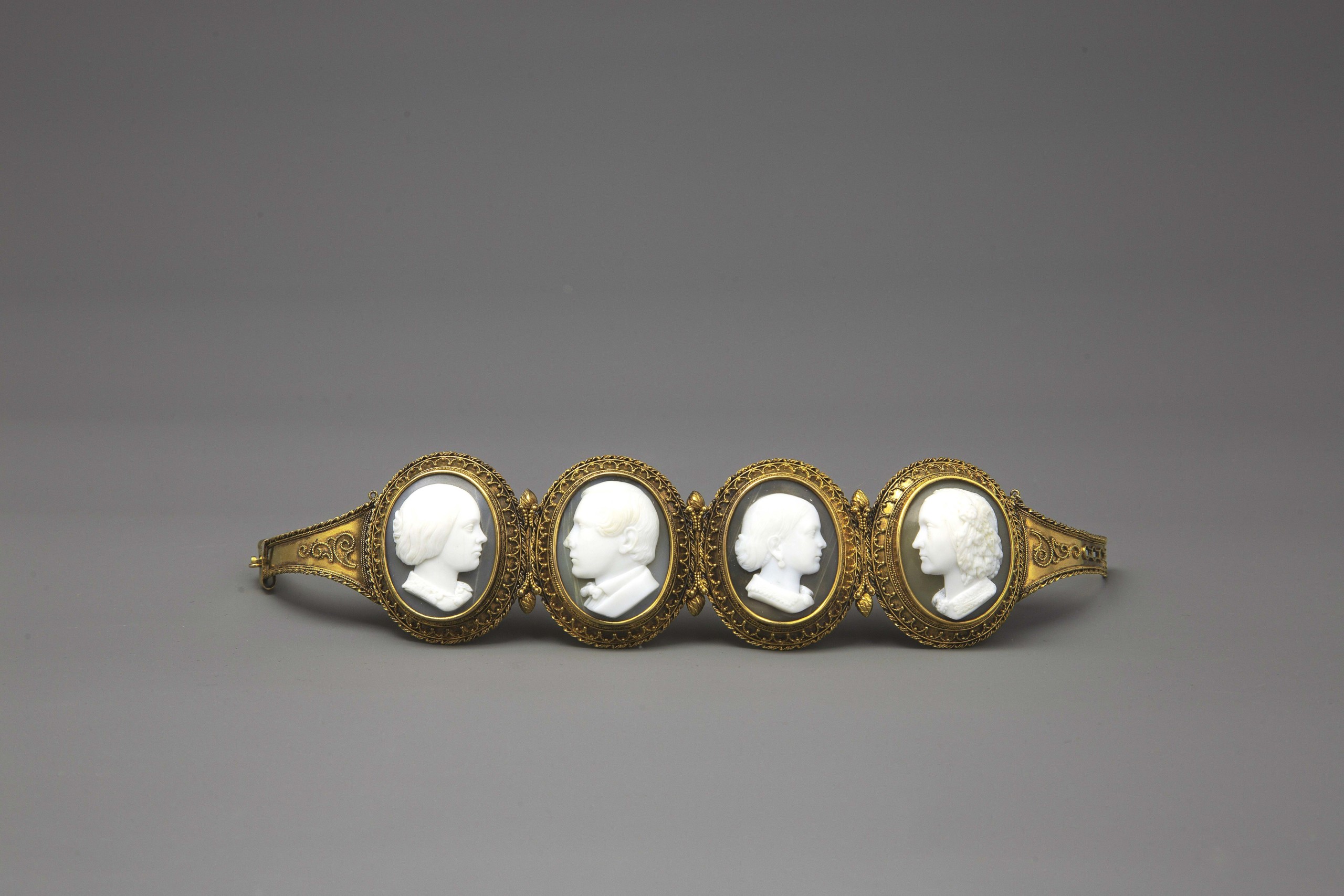
“Stuart family cameo” by Augustus Saint-Gaudens (American, 1848-1907), after 1861, shell and gold; long for bracelet: 8¾ inches. Saint-Gaudens National Historical Park, Cornish, N.H. Courtesy American Federation of Arts.
This touring exhibition is sure to generate lively debate as it makes its rounds at a time when the roles of historic monuments — and their latent messages — have prompted the removal of works in various locales. These works were, after all, reflective of their times, and commissions depended upon relationships between the artist and his patrons and clients. Acknowledging that these works are marked with symbols of white privilege and often devoid of the presence of indigenous people or people of color, do we erase history, or do we use the objects and art that have shaped us as starting points for new scholarship and understanding?
Deconstructing the elements that regularly figured in historic monuments helps us decode the artist’s language and revisit the ideas and the values of a particular region and at a particular time. Yet we can see the blind spots more clearly today, and perhaps are better able to recognize their derisive power on subterranean levels.
Between 1860 and 1920, Americans experienced the Civil War, World War I and the influenza epidemic of 1918. These were times of trauma and loss that still resonate with us, and French’s and Saint-Gaudens’s funerary monuments offer insights into the ways in which the country sought to memorialize them. Now, as we navigate the ongoing effects of the pandemic and ingest a daily diet of death and loss in our own country and around the world, these works have new insights to offer us.
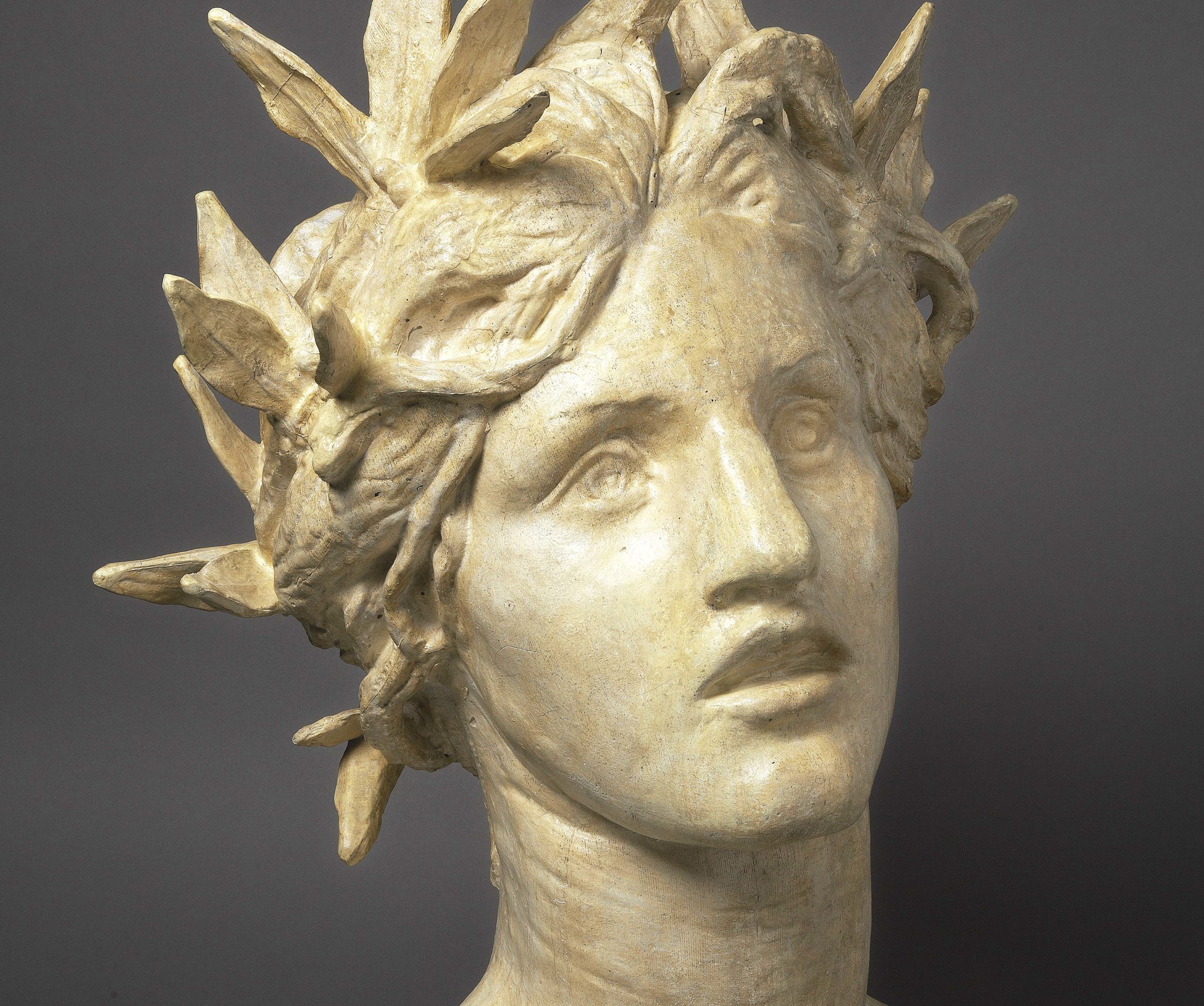
Head of “Victory” (detail) by Augustus Saint-Gaudens (American, 1848-1907), 1897-1902, plaster, 24 by 19 by 22 inches. Saint-Gaudens National Historical Park, Cornish, N.H. Courtesy American Federation of Arts.
Erika Doss, who has written extensively about monumental sculpture, believes our country is experiencing a period of what she calls “monument mania.”
After all, we have had no shortage of material. From school shootings to weather disasters, roadside accidents and a seemingly endless succession of wars, the need to make sense collectively of the senseless is what makes monumental sculpture such an intensely public art form.
“These works reside in public squares and are open for viewing at any time and in any weather. We pass them regularly on our commutes, while walking the dog or on the way to the playground. Whether a bronze soldier on horseback, a long-dead statesman standing mid-oration or a marble allegorical tableau in a pediment high above street level, we may know or admire these works. We may recognize the subjects from their names carved onto a pedestal or the ways in which these artworks have become the focus of civic ceremonies or protests,” Doss writes.
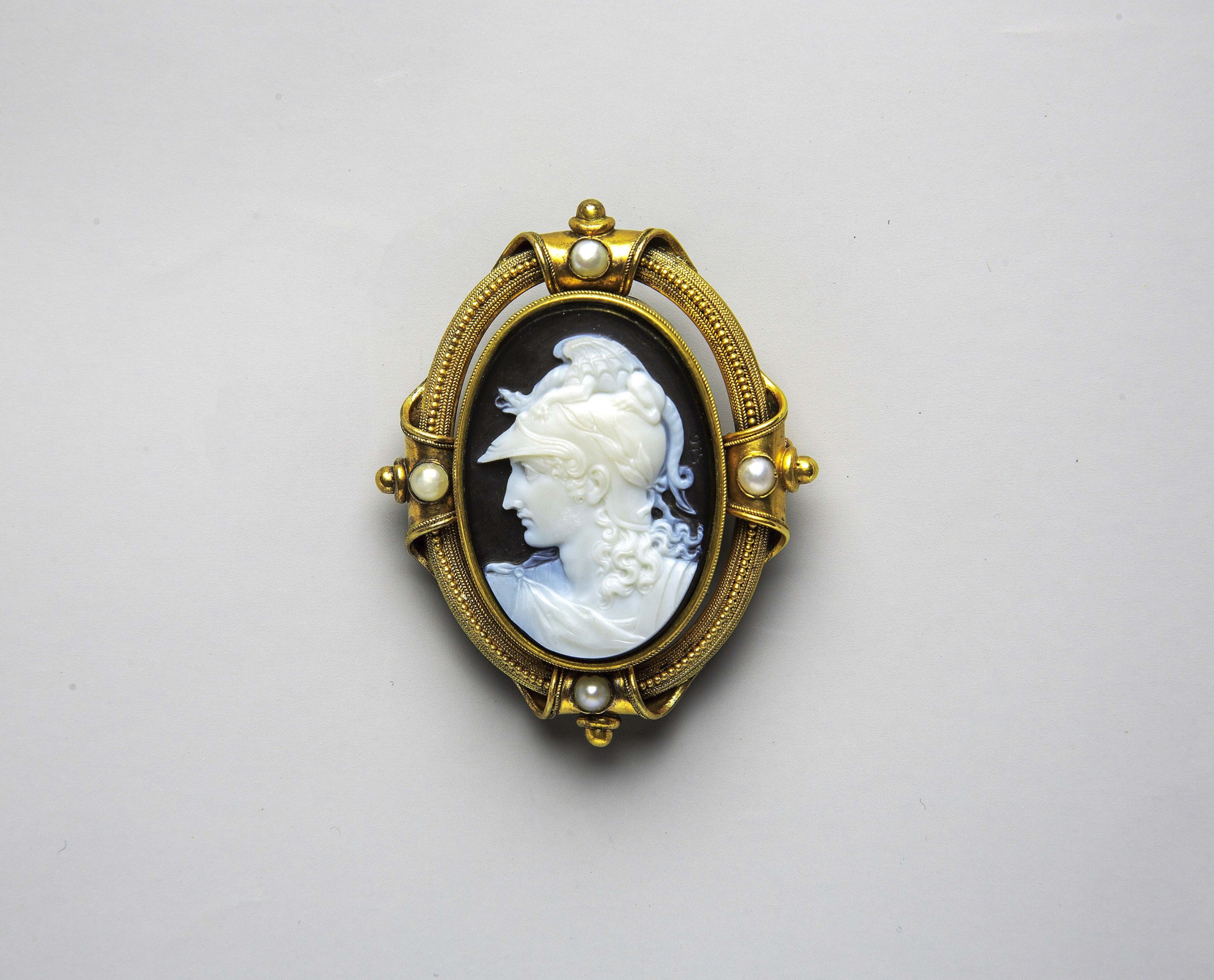
“Mars cameo” by Augustus Saint-Gaudens (American, 1848-1907), 1873-74, onyx; diameter: 1-5/8 inches. Saint-Gaudens National Historical Park, Cornish, N.H. Courtesy American Federation of Arts.
Yet history is also evolving, Delmez notes: “The works on view in the exhibition have the potential for multiple interpretations in relation to contested histories, encouraging us to question the stories that public art tells and to explore what — and whose — histories remain hidden.”
“Monuments & Myths: The America of Sculptors August Saint-Gaudens and Daniel Chester French” is at the Frist Art Museum through May 27.
The Frist Art Museum is at 919 Broadway. For information, www.fristartmuseum.org or 615-244-3340.

